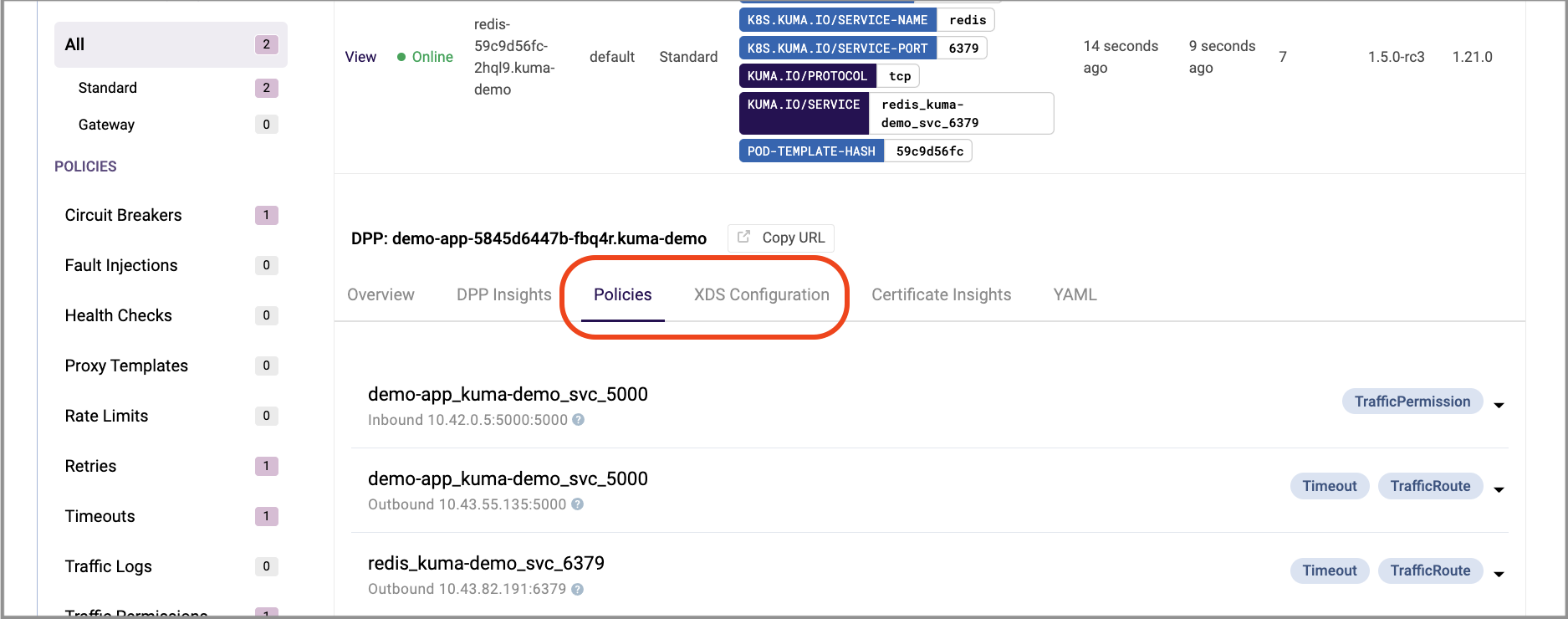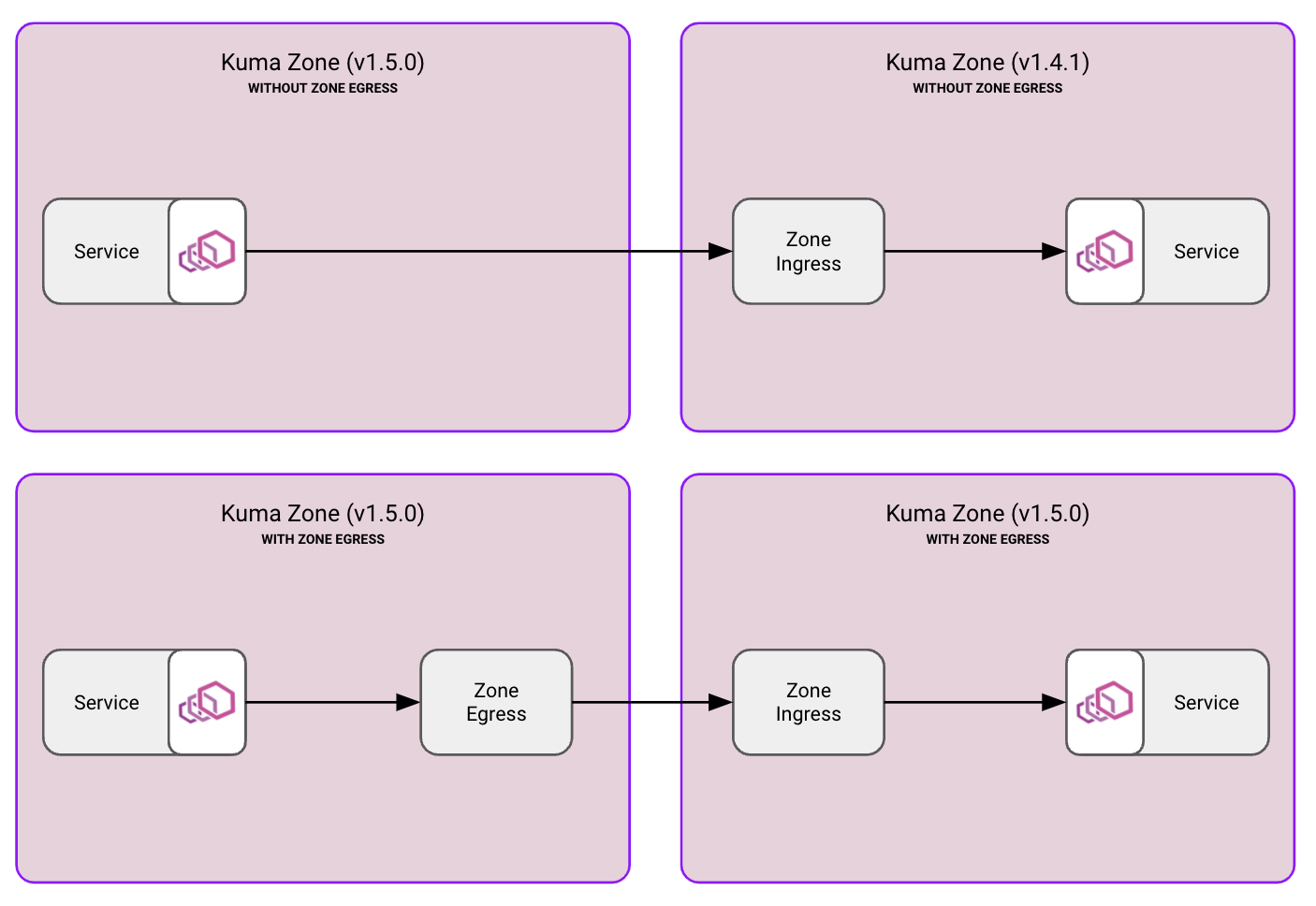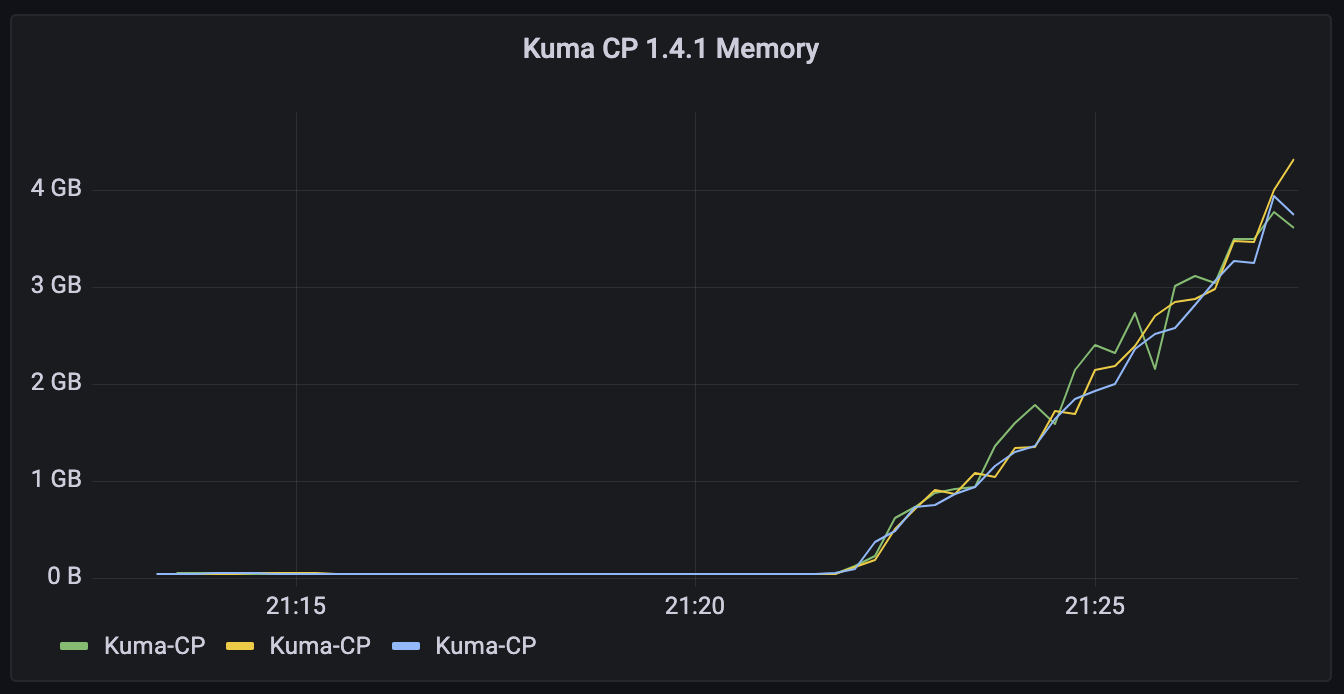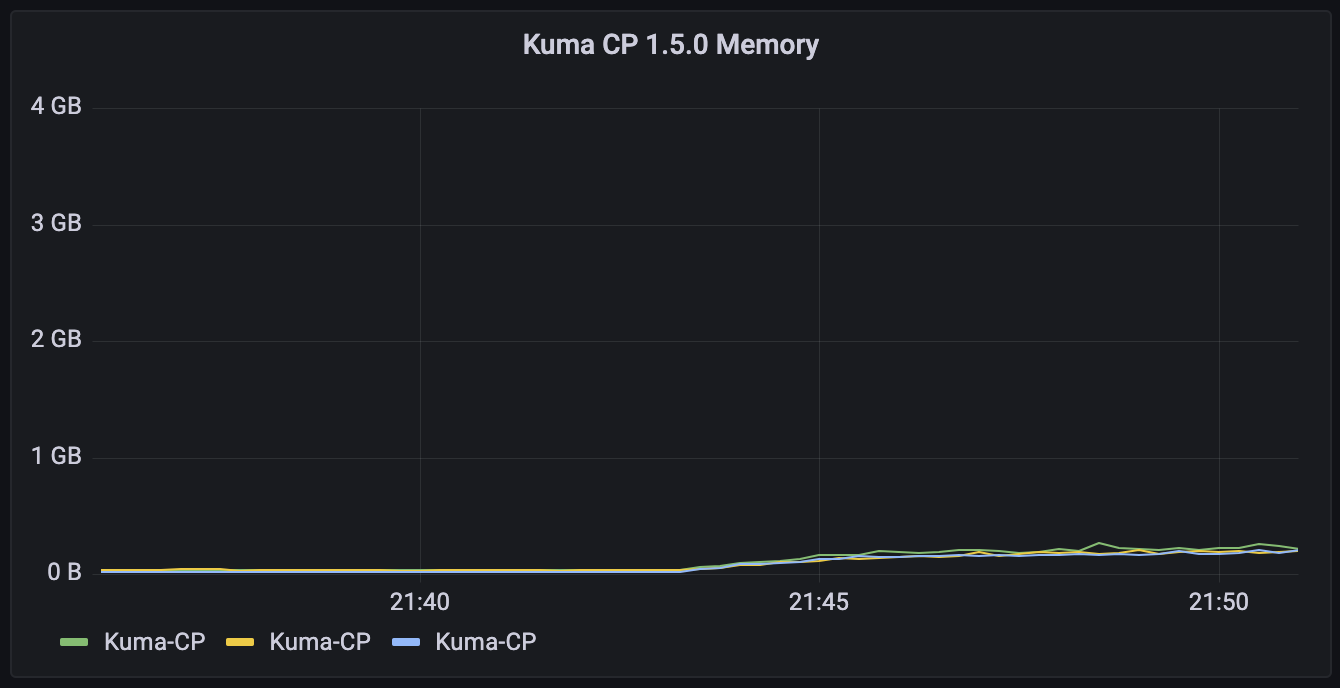Kuma 1.5.0 GA Released With Centralized Zone Egress & Built-In Envoy Gateway

We are happy to announce Kuma’s first release of 2022, which is packed with features and improvements, including substantial performance improvements when running at scale.
We strongly suggest to upgrade, in order to take advantage of the latest and greatest when it comes to service mesh.
Notable Features
- 🚀 A new Zone Egress resource to create a single egress point from a Zone, that goes in hand with the pre-existing Kuma Ingress. This new features has been added in addition to the pre-existing egress behavior, which means that Kuma now allows to configure two egress modes: centralized via Zone Egress, or decentralized from the sidecars.
- 🚀 A new
builtingateway mode in addition todelegatedmode. Kuma now ships with an Envoy-based gateway implementation to expose services from within the service mesh to the outside world - or to other meshes - using an Envoy based ingress. - 🚀 This new version ships with a 90% decrease in memory consumption when running Kuma at scale, as part of our ongoing effort to make Kuma the fastest service mesh in the world.
- New troubleshooting tooling in the CLI and GUI to help identify issues faster.
- A new Mesh membership capability that determines, top-down, what DPPs should be part of a
Mesh(in addition to the bottom-up membership mode that is already supported, where a DPP can choose whatMeshit belongs to). - Helm chart improvements to provide custom
imagePullSecrets. - Updated Envoy proxy to v1.21.1.
And a lot more! The full changelog is available here.

Kuma 1.5 ships with new troubleshooting capabilities in the GUI and CLI
Zone Egress
Kuma is a multi-zone service mesh and since the beginning it supported the concept of Zone Ingress to allow traffic generated from a zone to enter another zone through a centralized ingress resource. Traffic that is coming outside of Kuma can enter the Mesh via Gateway data plane proxies.
With Kuma 1.5, we have finally introduced a new Zone Egress resource, to channel traffic exiting a zone through a centralized egress component. Prior to this capability, the only egress functionality that Kuma supported was for egress traffic to exit the zone directly from the data plane proxies (which is still supported if we prefer the operational simplicity of not having to manage an additional component).

This gives us plenty of options when it comes to managing our ingress and egress traffic from within our Kuma zones.
Built-in Envoy-based gateway (technical preview)
This release of Kuma introduces a new builtin Gateway data plane proxy (technical preview), that can be used to expose mesh services to the outside world via an Envoy proxy. The new builtin gateway works across Kubernetes and VMs (like every other feature of Kuma). Before we release this feature as GA in the next release, this new gateway will also natively support the new Kubernetes Gateway API specification, the successor of the older Ingress.
This also means that starting from today, Kuma supports two gateway modes:
- Delegated
- Builtin
Delegated gateways have been supported for a long time, and they can be used to expose services to the outside world by delegating the capability to a 3rd party API Gateway, like Kong Gateway. This gives us plenty of options when it comes to exposing our services from within a Mesh:
- To expose our services via a mature API Management solution, we can still use the
delegatedgateway mode. - If we don’t need an APIM solution, but simply a pure Envoy-based ingress for our services, we can use the new [
builtinmode], which has the benefit of not requiring a 3rd party solution.
The builtin gateway is currently experimental and is enabled with the kuma-cp flag --experimental-meshgateway or the environment variable KUMA_EXPERIMENTAL_MESHGATEWAY.
Performance Improvements
We always put lots of effort into improving the performance of Kuma to better sustain large service mesh deployments. On this release, we have significantly refactored our memory management capabilities and - by doing so - decreased memory consumption by 90%.
Below, you can observe the differences in memory consumption between Kuma 1.4.1 and the new 1.5.0, when new services are being added.


Performance is a key focus area of Kuma, and this is one of many performance improvements that we have shipped into the project over the past few months, in order to make Kuma easier than ever to scale in production environments.
Join us on the community call!
Join us on our community channels to learn more about Kuma, including our official Slack chat. The community channels are useful to get up and running with Kuma, as well as to learn how to contribute to and discuss the project roadmap. Kuma is a CNCF Sandbox project: neutral, open and inclusive.
The next community call will be hosted on March 9th at 8:30am PDT. Also don’t forget to follow Kuma on Twitter and star it on GitHub!
Upgrading
Be sure to carefully read the Upgrade Guide before upgrading Kuma.
Get Community Updates
Sign up for our Kuma community newsletter to get the most recent updates and product announcements.
Thank you!
You're now signed up for the Kuma newsletter.
Whoops!
Something went wrong! Please try again later.
